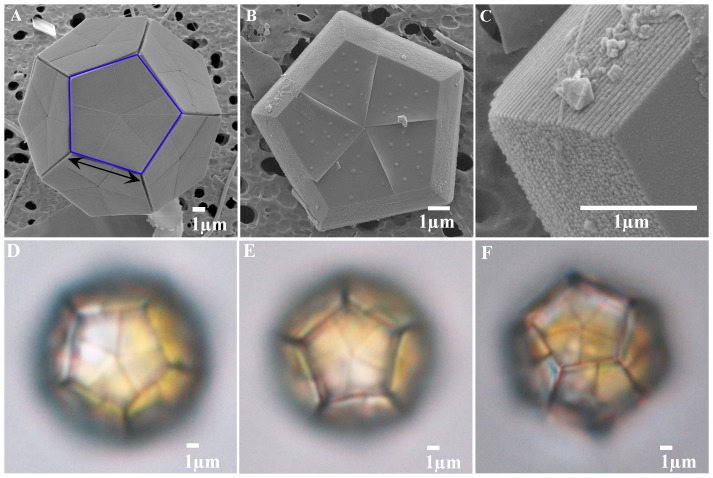
When it comes to disasters it’s hard to beat the asteroid that hit Earth 66 million years ago and wiped out three-quarters of the plants and animals, including the dinosaurs.
The asteroid hit near the Yucatan and fried everything within 1,500 km (930 miles) — a huge area that includes Cuba, Florida, and a wide arc to Myrtle Beach, Nashville, Dallas and central Mexico. The impact left behind a huge crater called Chicxulub, half of which is underwater today.
Last year geologists pulled core samples from the crater’s underwater peaks and discovered an amazing thing. Life came back to the crater’s edge in only hundreds, not millions, of years.
The pioneering organisms were microscopic plankton, members of Thoracosphaera (spheres) and Braarudosphaera (dodecahedrons), whose tiny shells were found just above the devastation line. Here are examples of these tiny structures, so small that they can only be seen with an electron microscope.


Even though the ocean was toxic at the time, plankton recolonized it rapidly after Earth’s fifth mass extinction.
Oddly enough, this makes me hopeful.
Based on Earth’s current extinction rate of 1,000 times the normal background rate (predicted to become 10 times worse) scientists believe we’re at the start of the sixth mass extinction. I’ve already seen population declines in many of my favorite birds and I worry for the future of all plants and animals … and humans, too.
Life came back really fast after the last mass extinction. I hope it will do so again.
Read more here in Science News.
(painting of asteroid impact by Donald E. Davis in public domain, Thorascosphaere photo from Wikimedia Commons, Braarudosphaera bigelowii image linked from DodecaBeing blog. Click on the images to see the originals.)
p.s. The February 13&20, 2017 issue of The New Yorker has a great cartoon about the asteroid. Click here to see.
We are the most dangerous being on the planet especially to ourselves.why cant we take care of this priceless world.
Because we live in a me, me, me society!